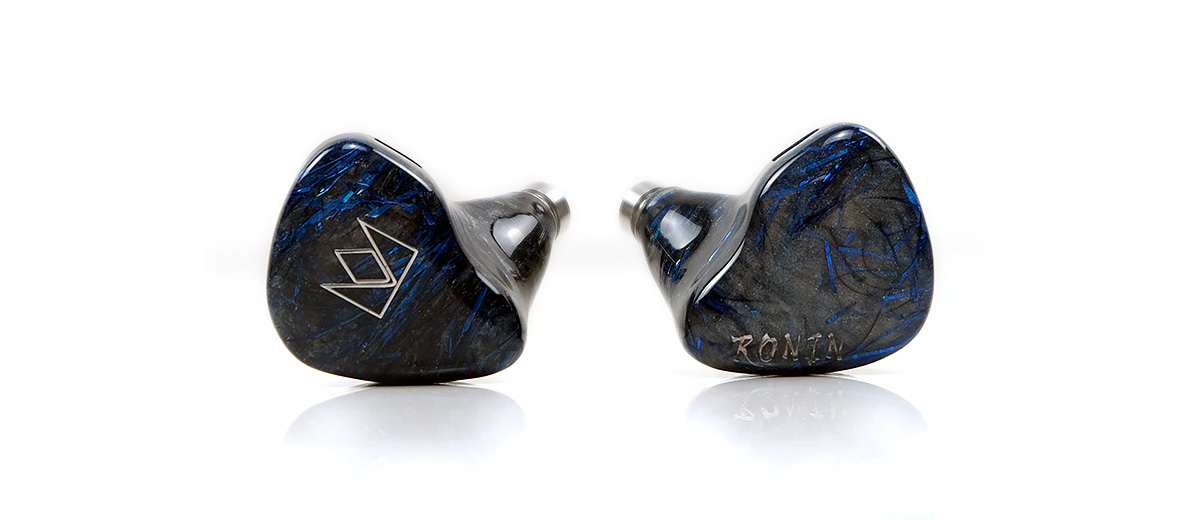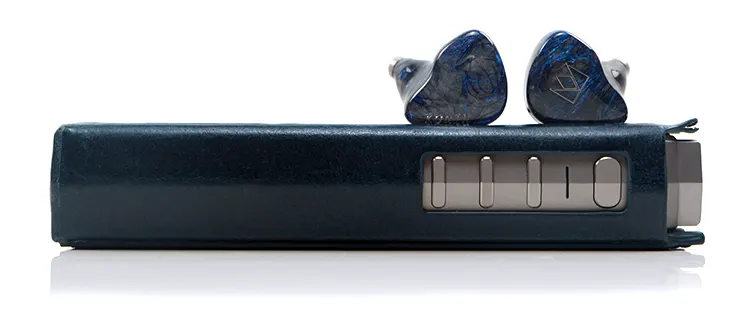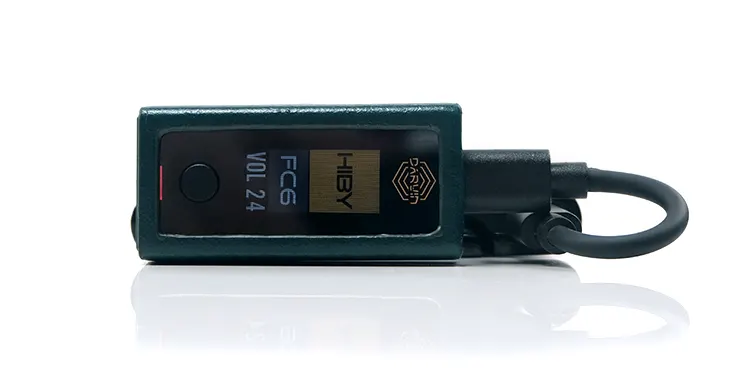Sound Impressions
Summary
The Noble Audio Ronin is perhaps the most accessible and balanced-sounding monitor the company has produced to date. It offers fantastic detail, intricate layering, and a fulsome midrange with excellent vocal texture.
What I am most pleased about is the delicate weight and emphasis placed on the EST drivers producing a very fine harmonic balance that rarely sounds ruffled. It’s a beautiful middle ground so to speak between smooth and engaging and a treble tuning that I think Noble has nailed almost perfectly giving the Ronin a high degree of ‘agreeability’.
All that sumptuous timbre is nothing without technical capability and the Ronin has it in spades. Given its balance armature and EST driver make-up, it is no surprise it excels for fleshing out micro-detail and some speedy transients to go along with a spacious staging quality.
Perhaps, surprisingly, that speed and detail do not really translate to a high-contrast or analytical-sounding midrange. The Ronin does sound firm and meaty in the mids, more so than the likes of the Kublai Khan and even the Viking Ragnar.
The Ronin mid-performance is a strong selling point. Vocal enthusiasts will definitely enjoy their relatively forward presence and timbral balance.
The one Achilles Heel in the Ronin armory might be the bass weight. And I say that only in the context of Kublai Khan and Viking Ragnar owners who crave that dynamic driver power because this is more about speed and mid-bass punch than sub-bass rumble.
Frequency Response
There is a lot of Harman Target sensibility in the Ronin frequency response which possibly goes some way to explaining why the coloration is so agreeable. There are some deviations also such as the lack of sub-bass lift and a slight bump around 5-6k.
However, they are relatively mild drops or peaks rather than out of whack. The only time I felt them to be more ‘present’ in the coloration was with some neutral clean pairings such as the iBasso DX320 MAX Ti which seems to bring out a stronger treble and flatter bass response.
Bass peaking is around 50-100Hz with little in the way of dips right up to 1k giving it a fairly linear and slightly warm response from the mid-bass right up to the lower-mids. Nothing is sucked out which goes some way to explaining the fuller mids tone you get from the Ronin.
Pinna gain, as some like to call it, is there from 1-3k and it is more noticeably forward sounding compared to the Ragnar and Kublai Khan. The Sultan has a decent nudge from 1-3k also but it doesn’t bring the same solidity and warmth with its stronger lower-midrange dip. So, out of the above-mentioned IEMs, the Ronin vocals have the best presence.
Aside from a few bumps at 5k and 8k, the Ronin treble curve is more on the relaxed and descending side in terms of energy. It bucks the trend of Noble’s dynamic driver flagship models with a more nuanced and less contrasty sound up to 10k but with plenty of EST refined delicacy and good extension beyond 10k.
Timbre
The Ronin coloration is natural in tone, and very easy on the ear with an excellent harmonic balance. Not to be confused with sounding syrupy or overly euphonic though and nothing overly smoothed over and lacking in detail.
The bass fundamental is on the neutral side. The Ronin punches rather than growls with the sub-bass weight quite controlled sounding.
The lack of substantial mid-bass to lower-mid dip, however, keeps instrumental presence to the fore so it’s not a thin sound. Rather, there is a pleasing fulsome tone to the Ronin mids and a sensible imaging balance for you to enjoy that without reaching for the EQ.
The Ronin timbre can also vary from the natural to the warm side depending on the tips and source in use.
I found the blue stem wide bore silicone tips to give me the best balance between smooth and clear whereas the foam tips brought the performance closer to the warm and laidback side of the spectrum.
The red stem tips brought a little more ‘bottom-up’ bias and a strong fundamental but seems less open and airy, not as dynamic sounding as the blue stem tip performance.
Sources also tended to have subtle tweaks with the iBasso DX320 MAX Ti producing the cleanest and more resolving sound but perhaps pushing the delicate treble a bit harder and the bass a bit flatter than I would have liked. I tended to prefer the more natural smoother sound from the N8ii, RS8, and dongles such as the RU6 and the FC6.
Staging & Dynamics
The dynamics are really quite good on the Ronin. This is a forward and engaging sound with plenty of midrange presence but remaining open at the same time with excellent control. Nothing smeared or fuzzy sounding with its excellent bass layering or instrumental separation.
I would call this a spacious soundstage though its absolute depth does not quite rival that of Ragnar or the Kublai Khan’s dynamic driver sub-bass performance.
Nor will you get a strong forward treble imaging from the EST drivers so percussion energy is good with decent weight but not in your face or sharp sounding.
This is more about excellent width and height with the magic happening in the mids vocal imaging and intricate instrumental positioning. I do believe that vocal lovers will warm to Ronin as a result.
Synergy
Efficiency
The Noble Audio Ronin is rated at 17Ω and 114 dB @1kHz for SPL although those numbers are not officially published on the website.
It is not a super sensitive monitor compared to the likes of the Vision Ears Phonix or some of Campfire Audio’s line-up such as the Solaris but more so than their current line-up of dynamic driver hybrids from their flagship series.
Our subjective testing confirms that the Ronin is a little more sensitive compared to the Sultan, Kublai Khan, and the Viking Ragnar. However, do note, its stronger midrange emphasis and vocal presence will likely accentuate that perception since the other three are comparatively more neutral in the same region.
I was looking at around 5-10 more steps volume-wise on the likes of the HiBy RS8 using its Turbo mode low gain balanced 4.4mm output compared to the above monitors.
Noise on DAPs and dongles should not be an issue either from Ronin. I tested it from 1 smartphone, 5 DAPs, and 3 dongles and none of them had any signs of background hiss or EMI from our smartphone pairing so the Eletech cable shielding seems to be doing its job quite well.
The only DAP that didn’t have a healthy silence was the HiBy RS8 on turbo mode high gain using the balanced output but this was just the gain setting with audible music coming through even when the volume setting was at zero.
Pairings
The Ronin is not the type of monitor that is going to be too fussy with pairings. This is more about maximizing the excellent level of detail and dynamic range it can offer. Beyond that, it might come down to personal preference in terms of tonal bias.
From the 5 DAPs and 3 dongles, I found myself gravitating to pairings that not only offered a high level of resolution but without upsetting that smooth tonal quality the Ronin can deliver at the same time.
DAP Pairings
Out of the DAP lineup, I edged towards the Cayin N8ii and the HiBy RS8 in terms of an ideal Ronin pairing. Both offered a solid low-end, perhaps more so with the HiBy RS8 with both of their additional boosted modes turned on.
The N8ii, however, gives vocals a bit more presence and sweetness, especially with Class AB and the tube timbre in tandem. The RS8 is a little firmer in terms of note body but more neutral in the Ronin mids both in terms of imaging and coloration.
The Cayin N7 and the P6 Pro will thicken up the low-end nicely but two things held me back from giving them top billing status when paired with the Ronin.
The first is the Cayin N7’s slightly less resolving central imaging capability with stronger extreme spatial cue emphasis. You get a huge soundstage but I did not feel as connected to vocal performance as the N8ii or RS8.
The second was the lack of headroom and space from the P6 Pro. It’s a dynamic meaty sound with beautiful vocal texture but not as airy as the other three and can sound very intimate at times.
Surprisingly, the iBasso DX320 MAX Ti was not an ideal choice for me with the Ronin. Granted the resolution, dynamic range, and incredible imaging accuracy from this Ronin pairing were all there but the tonal coloration felt a little too clinical with stronger upper-mids and treble emphasis and not enough warmth on the lows.
That can tip the Ronin into a slightly dry delivery with some of that minor treble bumping having too much influence. It’s not a sharp sound but rather the harmonic bias was a bit more upper order than lower with a weaker fundamental from a more neutral bass performance.
Dongle Pairings
I tested the Questyle M15, RU6, and HiBy’s new FC6 and the theme stayed mostly the same, a bias to something smoother over analytical or too bright.
Now the M15 would have fallen by the wayside like the DX320 MAX Ti save for its stronger bass presence and excellent dynamics. The only caveat is that the Ronin highs and mids are a little on the thinner side compared to the R2R dongles.
Both the RU6 and FC6 deliver a much smoother more analog tone which seems to gel well with the Ronin. Both flesh out a much firmer midrange and better vocal texture compared to the M15. I would say the FC6 teases out a nice thick bass tone but it is not as lively or as dynamic as the M15/Ronin bass presentation.
The RU6 is more refined through the mids and highs with better treble sparkle but a slightly lighter bass presence compared to the previous two dongles. Despite that, I felt the RU6 was more true to the Ronin tuning and sounded the most refined and spacious of the 3 dongles pairings.





